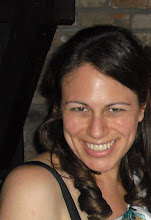Chag sameach, everyone! I just got back yesterday from a wonderful celebration of Passover with my immediately extended family. I would love to share all the traditions we have around the Seder, and all the levels and layers of meaning and symbol, but that would take hours. Maybe weeks. In fact, I'm sure it would make a lovely dissertation! So in lieu of a full guided tour, I'd like to share some of my family's traditional Passover foods.
Foodways provide a lot of insight into individual and group identity because food and the practices surrounding its preparation, presentation, and consumption comprise a vivid symbolic language that communicates and constructs identity.
Two of the Passover foods that are most special to me are Apple Cake and Knishes. For various reasons, I can no longer actually eat either of these, but they remain special to me because of the ways they are prepared, the stories surrounding them, and my own role in preparing and serving them.
Apple CakeMy cousin Alyssa and I are the designated makers and masters of the Apple Cake, and we have been for as long as I can remember. In fact, as the two girl cousins at the seder every year, neither I nor our mothers and aunts can remember a time that we weren't in the kitchen, helping with the seders, from beginning to end. Whether we were entrusted with the apple cake because it's a simple recipe and easily prepared (unlike the sponge cakes, the eggs do not have to be separated, for example), or whether we simply took over because we enjoyed making it (and eating it!) so much, I have no idea. All I know is that whichever aunt is hosting the seder lets the apple cake baking wait for our arrival (if possible). My Aunt Karen brought this recipe to the family, but we have definitely taken it over. Here are some pictures:

I'm beating eggs while Alyssa "gradually adds a scant cup of oil." The meaning of "gradually" and "scant" are always funny to us, and always require explanation to non-apple cakers! Tim is sifting the matzoh cake meal before measuring it. I will then stir (not beat!) it into the batter.

Two apple cakes: one decimated and one untouched (for now). I took this picture at the end of the second seder, and these are the third and fourth apple cakes of the weekend. We made five and 1/2 all together!
KnishesI don't even know where to start with knishes! Apparently, there are other kinds than the ones we make, but I've never seen or heard of them. Ours are essentially mashed potatoes with a ground meat filling. There' s a lot more to it than that, but I haven't ever really prepared the filling. I've fed a hard boiled egg or two through the grinder, sure, and I've watched it being made every year, but I've not yet be in the driver's seat, so to speak. Except for Aunt Karen, none of my aunts nor my mother grew up making knishes. They all learned to make them from my Grandma Alta (great-granmother), and my Bubbie Rissel. At my mother's first seder, the women of the family taught her the first verse of one of the Hebrew songs while they made knishes, so that she could surprise my father by knowing it later that night. And he was very surprised, to be sure! Until a few years ago, the "one" verse of Echod, Ani Oh-dey-ah? (Who knows one? I know one!) was hers, until we all taught her Schnei-eem, the "two" verse.
But going back to knishes... We usually either make an assembly line, or a circle around the work space. This year, because the Aunt Diana's kitchen island is so wide, we made an assembly line.

In this assembly line, you can see the various stages of knish construction. From left to right: waiting (with potato-y hands), coating hands with matzoh meal, flattening a ball of mashed potatoes, adding meat filling, and closing the potato parts around the meat parts. Aunt Nancy is holding a finished (unbaked) knish.

Aunt Diana and Aunt Nancy ponder how much oil REALLY needs to go into the pan (a lot!). In some ways, we all re-learn how to knish every year. My mom is the only one that can seem to remember all the amounts and ingredients from year to year! This may be because she knows that you put in "enough eggs/matzoh meal/etc so that it feels right," and isn't concerned with exact amounts. But what better way to follow a recipe that instructs you to stick your elbow in the oven to see if it's hot enough?

Finished knishes! These are on trays, ready to be warmed in the oven. They'll be put onto platters for serving.
I'd love to hear about your family's holiday food traditions, or any questions you have about ours!






